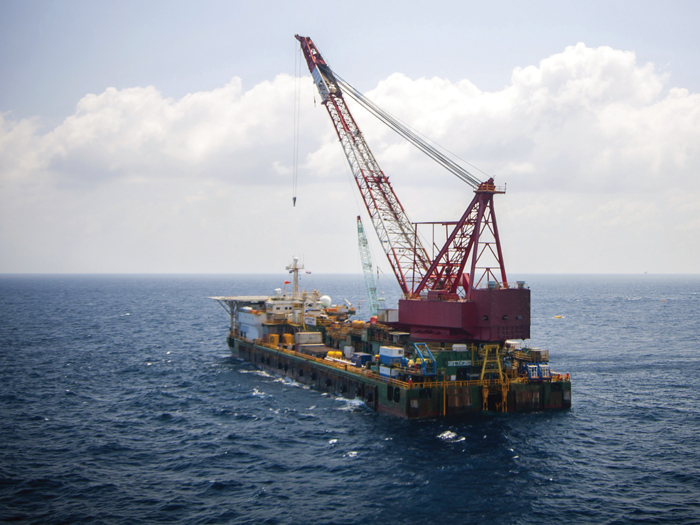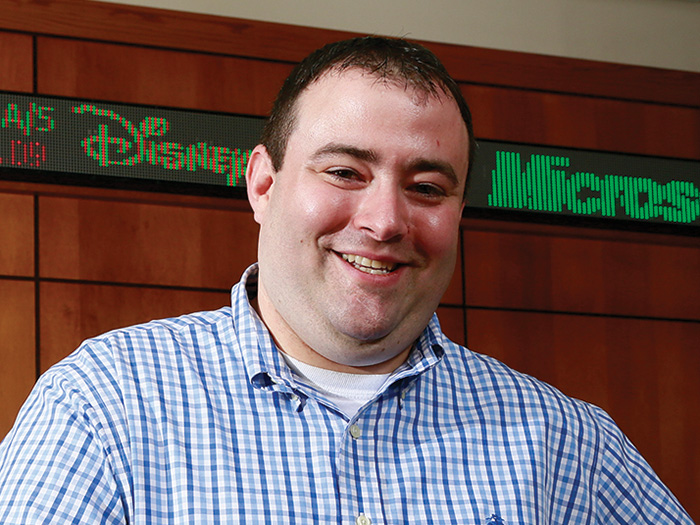Project Cargo
Project Cargo: Bigger is Beautiful

After years of declining activity, the project cargo risk management business is back on the move, with carriers expecting growth opportunities going forward.
Project cargo involves the movement of large, heavy, valuable goods, often over vast distances, and usually on specialized trucks, trains, aircraft, or vessels. Energy is a major client, as in oil rigs, wind-turbine blades, turbines, and refinery processing units.
Infrastructure is also a fast-growing segment, especially in Asia, Africa, and Latin America. Major losses are rare but represent a double whammy to owners and underwriters: The components themselves are often custom-built and can be worth many millions of dollars. Beyond their inherent value, the damage or loss of big project pieces can cost many times their replacement value in project delays and business interruption.
The size of the global project cargo business varies with economic activity, governmental spending, and infrastructure development, said Steve Weiss, Latin American marine manager and vice president of marine engineering and project cargo for Liberty International Underwriters.
“There are years when the global book would exceed $100 million in total premium and years where this would be much less,” Weiss said.
“Prior to 2008, the project cargo business was very busy globally; 2008 to 2011 showed a dramatic slowdown except in some of the developing countries like in Latin America, as the need for power was great. The market is on an upswing due to lenders getting back in the market and pent up demand. We expect a growth in project opportunities in the next few years.”
As business grows, lead underwriters remain focused on the skills of the contractors both on the procurement and transportation ends of the business. “We focus our engineering and underwriting efforts on the long lead, critical items that could most affect the project timeline,” said Weiss. “The critical item moves are the things that keep underwriters up at night.”
Innovation in this market is typically focused on policy wording and the day-to-day management of the account.
“One service enhancement is the ability, with mobile devices, to support the client directly in the event they forgot to notify us of a critical item move. With a series of photos or other documentation, we can often forgo a survey and enable the client to not incur any delay,” Weiss said.
Follow the Leader
Capacity needs of larger projects require more than one insurer to cover the project. There are often three or four other underwriters — sometimes up to twice that many — that are known as slip carriers or following players, that will take a smaller percentage of a cover on a subscription basis.
In those cases, they are truly subscribers or followers; they underwrite the lead carrier’s capabilities with respect to underwriting, risk management, or claims handling before they sign on to the slip with a following position. They get a check for their percentage of the premium, and if there is a claim they write a check for their percentage.
Carriers said the arrangement suits them well. The followers like to have operators like Liberty Mutual, Allianz, or a few specialized underwriters such as Coast Underwriters lead the project. They have the size and expertise.
The leads like to have the followers, which can be large underwriters themselves, to boost capacity. The covers in project cargo can be extremely large, and are often placed in conjunction with a major construction project, so there is usually some coordinated coverage.
“There are many carriers active in the project cargo market, but only a very limited number that will act as lead underwriter,” said Kevin Wolfe, global head of project cargo at Allianz Global Corporate & Specialty.
“That is because the loss-control and risk-management aspects from underwriting through the project require more assets and capabilities than most carriers wish to allocate to this business segment.”
There have been some recent important shifts in the global project cargo business. Instead of being built on site, many structures — say, for a bridge — are built in modules and shipped.
That means that frequency of project-cargo shipments is increasing, as is the total insured value. Loss frequency is still low, but underwriters said the rising value of shipments means the risk of loss is also rising.
“A cargo of steel is worth one thing, but a bridge section could be worth $400 million and weigh 1,000 tons,” said Wolfe.
As noted, a bigger problem would be project delays.
“We are not just talking about the cost to refabricate the component,” said Wolfe. “Maybe the heavy-lift ship or aircraft is not available again for six weeks after the new completion date. Maybe the utility building a new power plant has contracts to supply power from it, and now has to buy power until the delayed generator can come on. The equipment can cost $40 million and the delay to refabricate, ship, and commission, including lost business and other costs, can be 10 times as much.”
Beyond energy and infrastructure, project cargo can get exotic, said Michelle E. O’Donovan, national product line director at International Marine Underwriters/OneBeacon, based in New York.
“We were involved with the movement of the Space Shuttle Enterprise to the Intrepid Museum in New York. In addition to project cargo transportation, carriers require special liability coverage too when moving project cargo. Even the military has need of project cargo. For example, the movement of submarine parts down river by barge to Newport News [Va.].”
O’Donovan added, however, that “not all project cargo involves $100 million in limits done by the major project-cargo players. Many are successfully handled by other marine insurers. Due to the competitive nature of our market and with some inexperienced carriers writing project cargo, some brokers have modified the terms to expand coverage. Some new markets have accepted changes to the standard project cargo and delay-in-start-up clauses while others continue to write business on market standard terms.”
Among the few underwriters that take lead positions in project cargo, Coast Underwriters, based in Vancouver, British Columbia, might seem like a fighter punching above his weight, but the company is a subsidiary of the RSA Group, based in London. Kevan Gielty, president and CEO, relishes his company’s ability to consider a wide range of project cargo business.
“To be effective, we look to write all of the risk or at least lead. If we take a following position, then we are very careful who we choose to follow, as we have to then rely on the risk management of the lead underwriter. There are two keys to the ability to lead on project cargo,” said Gielty: the technical expertise and breadth to handle the underwriting, and adequate capacity.
“If you are bringing $5 million or so of capacity, you have little influence on a potential deal. Our capacity on any given project can be in the $50 million to $100 million range. Risk management is essential, because of the size and weight and complex challenges in this business.”
Coast has two risk managers on staff, and Gielty said they stay busy.
“You can only be profitable in this business if you write.”
— Kevin Gielty, president and CEO, Coast Underwriters
“There is always something new in the proposals that come across our desks. As the underwriter, we set the price, but we rely heavily on our risk managers because damage or loss to a covered move is often not the worst hit, often it is the consequential loss, the business interruption.”
The best way to ensure losses are kept to a minimum is “to survey each project, each move, each lift to death,” said Gielty, “but that is just not cost effective. This is a very competitive market. That is why you need different horses for different courses. If we are writing a rail move, we have to know more than just the bridge weights and tunnel clearances. We have to know speed, elevation, inline, even the season and the right-of-way.”
In spring, for example, soggy ground can shift so a track weight limit might be compromised.
One insight Gielty offered is that “in this business, you have to listen to the insured. They are the ones making the move, they know their business. You don’t have to understand every single detail of their business, as long as you know that they know every detail of their business.”
That said, the old adage that “ya gotta know the territory,” is especially true in project cargo. In one recent case, a surveyor noticed a crew lashing an ocean-going cargo with nylon straps, when the shipment required chains; the change was made and the cargo shipped safely.
In another instance, a client had two large turbines coming from overseas for a new power generating station. They were large and heavy, but not so much that they could not have travelled on the same vessel.
That would have saved some money but Gielty said his risk managers, in consultation with the client, decided to ship them separately.
“If at least one turbine was delivered on time in good condition, then the plant could operate at reduced capacity versus both being damaged in a single incident. The decision illustrates comprehensive risk management: time, money, probability, and contingency planning.”
As an underwriter, Gielty takes a broad approach to his job, and the way Coast makes money.
“You can only be profitable in this business if you write,” he said.












